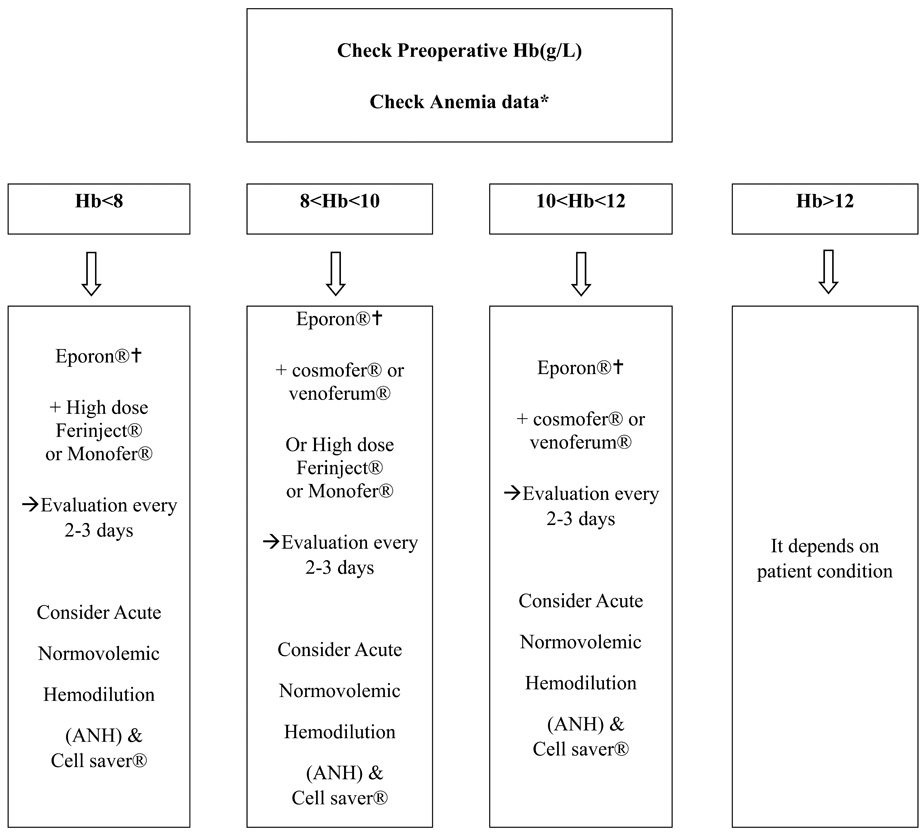1. Al-Refaie WB, Helen M, Abraham M, Jerome A, Elizabeth B, et al. Blood transfusion and cancer surgery outcomes: A continued reason for concern. Surgery. 2012; 152:344–354.

2. Goodnough LT, Aryeh S, Richard S. Bloodless medicine: clinical care without allogeneic blood transfusion. Transfusion. 2003; 43:668–676.

3. Choi YY, Seo DK, Choi DH, Kim JH, Lee KJ, Ok SY. Comparison of blood transfusion free pancreaticoduodenectomy to transfusion-eligible pancreaticoduodenectomy. Am Surg. 2011; 77:81–87.

4. Jabbour N, Singh G, Rodrigo M, Linda S, Earl S, John D, et al. Live donor liver transplantation without blood products. Strategies developed for Jehovah’s witnesses offer broad application. Ann Surg. 2004; 240:350–357.

5. Lin CC, Chen CL, Cheng YF, Chiu KW, Bruno J, Hsaio CC. Major hepatectomy in children: approaching blood transfusion-free. World J Surg. 2006; 30:1115–1119.

6. Yeh JJ, Gonen M, Tomlinson JS, Idrees K, Brennan MF, Fong Y. Effect of blood transfusion on outcome after pancreaticoduodenectomy for exocrine tumour of the pancreas. Br J Surg. 2007; 94:466–472.

7. Lucas DJ, Schexneider KI, Weiss M, Wolfgang CL, Frank SM, Hirose K, et al. Trends and risk factors for transfusion in hepatopancreatobiliary surgery. J Gastrointest Surg. 2013; 18:719–728.

8. Konstantinidis IT, Peter JA, Michael ID, Ronald PD, Mary EF, Florence G, et al. Pancreas and liver resection in Jehovah’s witness patients: feasible and safe. J Am Coll Surg. 2013; 217:1101–1107.

9. Choi SB, Lee JS, Kim WB, Song TJ, Suh SO, Choi SY. Efficacy of the omental roll-up technique in pancreaticojejunostomy as a strategy to prevent pancreatic fistula after pancreaticoduodenectomy. Arch Surg. 2012; 147:145–150.

10. Namgoong JM, Kim KH, Park GC, Jung DH, Song GW, Ha TY, et al. Comparison of Laparoscopic versus open left hemihepatectomy for left-sided hepatolithiasis. Int J Med Sci. 2014; 11:127–133.

11. Hwang DW, Han HS, Yoon YS, Cho JY, Kwon YJ, Kim JH, et al. Laparoscopic major liver resection in Korea: a multicenter study. J Hepatobiliary Pancreat Sci. 2013; 20:125–130.
12. Kim SC, Song KB, Jung YS, Kim YH, Park DH, Lee SS, et al. Short-term clinical outcomes for 100 consecutive cases of laparoscopic pylorus-preserving pancreatoduodenectomy : improvement with surgical experience. Surg Endosc. 2013; 27:95–103.
13. Yoon YS, Han HS, Cho JY, Yoon CJ, Kim JH. Laparoscopic approach for treatment of multiple hepatocellular carcinomas. Surg Endosc. 2012; 26:3133–3140.

14. Yun S, Choi D. Ruptured intrahepatic biliary intraductal papillary mucinous neoplasm in Jehovah’s witness patient. Int Surg. 2014; 99:590–594.
15. Jarnagin WR, Gonen M, Maithel SK, Fong Y, D’Angelica MI, Dematteo RP, et al. A prospective randomized trial of acute normovolemic hemodilution compared to standard intraoperative management in patients undergoing major hepatic resection. Ann Surg. 2008; 248:360–369.

16. Carless PA, Henry DA, Moxey AJ, O’Conell D, Brown T, Fergusson DA. Cell salvage for minimising perioperative allogeneic blood transfusion. Cochrane Database Syst Rev. 2010; (3):CD001888.

17. Waters JH, Yazer M, Chen YF, Kloke J. Blood salvage and cancer surgery: a meta-analysis of available studies. Transfusion. 2012; 52:2167–2173.

18. Alkozai EM, Ton L, Robert JP. Bleeding in liver surgery: prevention and treatment. Clin Liver Dis. 2009; 13:145–154.

19. Jones RM, Moulton CE, Hardy KJ. Central venous pressure and its effect on blood loss during liver resection. Br J Surg. 1998; 85:1058–1060.

20. Romano F, Mattia G, Fabio U, Luca D, Luca N, Luca G, et al. Bleeding in hepatic surgery: sorting through methods to prevent it. HPB Surg. 2012; 2012:169351.

21. Jabbour N, Singh G, Peilin AC, Brendan B, Rod M, Yuri G, et al. Recombinant human coagulation factor VIIa in Jehovah’s witness patients undergoing liver transplantation. Am Surg. 2005; 71:175–179.

22. Whipple AO, Parsons WB, Mullins CR. Treatment of carcinoma of ampulla of Vater. Ann Surg. 1935; 102:763–779.
23. Cameron JL, Pitt HA, Yeo CJ. One hundred and forty-five consecutive pancreatico-duodenectomies without mortality. Ann Surg. 1993; 217:430–435.

24. Yeo CJ, Cameron JL, Sohn TA. Six hundred fifty consecutive pancreatico-duodenectomies in the 1990s. Ann Surg. 1997; 226:248–260.

25. Gouma DJ, van Geenen RCI, van Gulik TM. Rates of complications and death after pancreaticoduodenectomy: risk factors and the impact of hospital volume. Ann Surg. 2000; 232:786–795.

26. Schmidt CM, Powell ES, Yiannoutsos CT. Pancreaticoduodenectomy. Arch Surg. 2004; 139:718–725.

27. Satoi S, Takai S, Matsui Y. Less morbidity after pancreaticoduodenectomy of patients with pancreatic cancer. Pancreas. 2006; 33:45–52.

28. Pratt WB, Callery MP, Vollmer CM Jr. Risk prediction for development of pancreatic fistula using the ISGPF classification scheme. World J Surg. 2008; 32:419–428.

29. Kazanjian KK, Hines OJ, Eibl G. Management of pancreatic fistulas after pancreatico-duodenectomy: results in 437 consecutive patients. Arch Surg. 2005; 140:849–856.
30. Poon RT, Fan ST, Lo CM. External drainage of pancreatic duct with a stent to reduce leakage rate of pancreaticojejunostomy after pancreaticoduodenectomy: a prospective randomized trial. Ann Surg. 2007; 246:425–433.
31. Kim Z, Kim J, Min JK, Hur KY, Choi D, Seo D, et al. Negative pressure external drainage of the pancreatic duct in pancreaticoduodenectomy. Hepatogastroenterology. 2010; 57:625–630.
32. Fischer M, Matsuo K, Gonen M, Grant F, Dematteo RP, D’Angelica MI, et al. Relationship between intraoperative fluid administration and perioperative outcome after pancreaticoduodenectomy: results of a prospective randomized trial of acute normovolemic hemodilution compared with standard intraoperative management. Ann Surg. 2010; 252:952–958.





 PDF
PDF ePub
ePub Citation
Citation Print
Print


 XML Download
XML Download